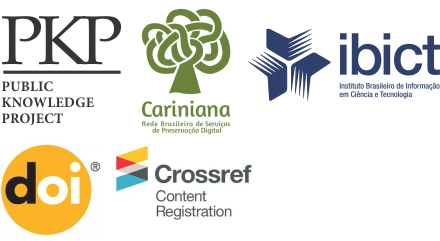SPECIFICITIES OF BODY MOVEMENT IN WHEELCHAIR SPORTS DANCE
DOI:
https://doi.org/10.36311/2674-8681.2023.v24n2.p326-337Keywords:
Dance, Inclusion, People with Disabilities, Adapted Motor ActivitiesAbstract
This study focuses on wheelchair sports dance for people with physical disabilities, with the aim of analyzing how a body allocates/appropriates a wheelchair and produces new artistic movements, and especially how these artistic movements have been historically structured and solidified in a new sports proposal. The methodological trajectory of this research was based on the collection and analysis of data from twenty-two years of experience with wheelchair sports dance groups. The information was obtained through video recordings of the choreographies presented by the various wheelchair dance groups during the Brazilian championships in 2022 and 2023. We also conducted formal interviews with dancers and choreographers from these same groups. In this way, we observed that the sport of dance has its own specificities. And thesespecificities were made possible by the countless experiences of new body movements with the wheelchair. And these experiences over the years have broadened the aptitudes of each body, the way the body is, without rigid model transfers. We therefore conclude that sport is a social phenomenon of great scope and visibility. However, there is an effort to overcome the difficulties encountered and the existing prejudices in their life and sporting trajectories, in order to be able to belong, grow in the sport, be recognized and valued in the sport they practice, because the sporting space is delimited and constituted by power relations.
Received: 2023/12/07
Reformulated: 2023/12/08
Accepted: 2023/12/08
Downloads
References
BRASIL. Decreto n. 6.949, de 25 de agosto de 2009. Promulga a Convenção Internacional sobre os Direitos das Pessoas com Deficiência e seu Protocolo Facultativo, assinados em Nova York, em 30 de março de 2007. Diário Oficial [da República Federativa do Brasil], Brasília, DF de 26 agosto, 2009. Disponível em: http://www.planalto.gov.br/ccivil_03/_ato2007-2010/2009/decreto/d6949.htm
BRASIL, Lei nº 13.146, de 06 de julho de 2015. Institui a Lei Brasileira de Inclusão da Pessoa com Deficiência (Estatuto da Pessoa com Deficiência). Diário Oficial [da República Federativa do Brasil], Brasília, DF, 07 jul. 2015. Disponível em: http://www.planalto.gov.br/ccivil_03/_Ato2015-2018/2015/Lei/L13146.htm
BRASIL. Ministério da Cultura. Lei Paulo Gustavo. Cartilha: A Lei Complementar (LC) 195/ 2022. Publicada em 15 mai. 2023a. Disponível em: https://www.gov.br/cultura/pt-br/assuntos/lei-paulo-gustavo/central-de-conteudo/cartilhaweb-lpg1505.pdf.
BRASIL. Ministério da Educação. Governo federal reforça política de educação inclusiva. 21 nov. 2023b. Disponível em: https://www.gov.br/mec/pt-br/assuntos/noticias/2023/novembro/governo-federal-reforca-politica-de-educacao-inclusiva.
COURTINE, Jean-Jacques. O corpo anormal: história e antropologia culturais da deformidade. In: COURTINE, Jean-Jacques. (Org.). História do corpo: as mutações no olhar: o século XX. 4. ed. Petrópolis, RJ: Vozes, 2011.
FERREIRA, E. L.; ALMEIDA, J. G. de A. Rodas, corpo e silenciamentos: uma análise dos discursos na mídia sobre a dança em cadeira de rodas. Revista Esporte e Sociedade, ano 16, n. 37, jun. 2023.
FERREIRA, E. L.; CAVALLARI, J. S. Sobre o (não) deslocamento dos sentidos da diferença no processo de inclusão escolar. Línguas e Instrumentos Linguísticos, ano 32, vol. 2, p. 87-103, 2013.
FERREIRA, E. L. Corpo-movimento-deficiência: as formas dos discursos da/na dança em cadeira de rodas e seus processos de significação. Tese (Doutorado em Educação Física), Universidade Estadual de Campinas, Faculdade de Educação Física, Campinas, SP, Brasil. 2003.
FERREIRA, E. L. Dança Artística em Cadeira de Rodas. In: FERREIRA, E. L. Esportes e Atividades Físicas Inclusivas. 2. ed. Niterói: Intertexto, 2014a. v. 9.
Downloads
Published
Versions
- 2023-12-14 (3)
- 2023-12-14 (2)
- 2023-12-14 (1)
Issue
Section
License
Copyright (c) 2023 JOURNAL OF THE BRAZILIAN SOCIETY FOR ADAPTED MOTOR ACTIVITY

This work is licensed under a Creative Commons Attribution-NonCommercial-NoDerivatives 4.0 International License.



